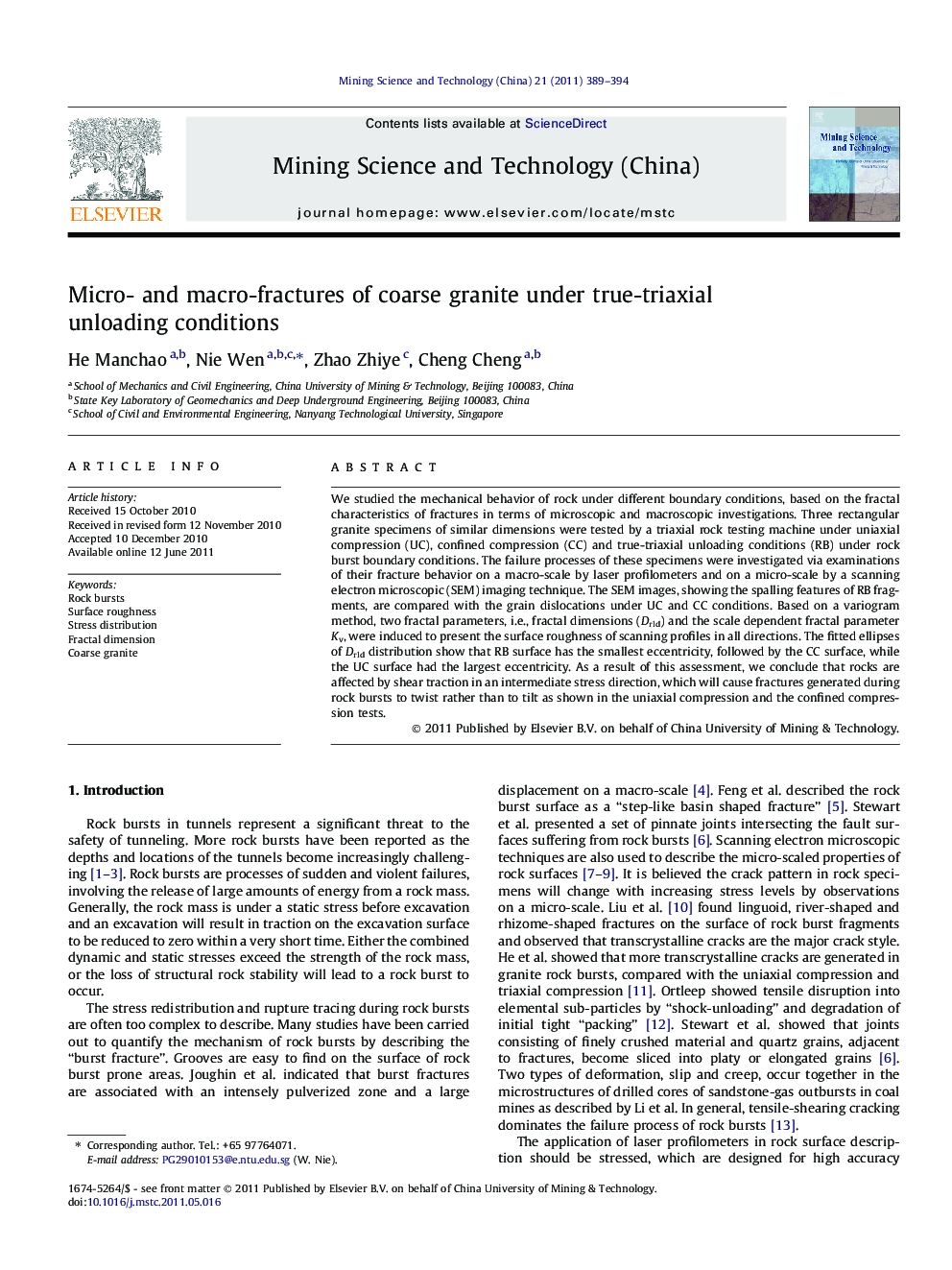| Article ID | Journal | Published Year | Pages | File Type |
|---|---|---|---|---|
| 294542 | Mining Science and Technology (China) | 2011 | 6 Pages |
We studied the mechanical behavior of rock under different boundary conditions, based on the fractal characteristics of fractures in terms of microscopic and macroscopic investigations. Three rectangular granite specimens of similar dimensions were tested by a triaxial rock testing machine under uniaxial compression (UC), confined compression (CC) and true-triaxial unloading conditions (RB) under rock burst boundary conditions. The failure processes of these specimens were investigated via examinations of their fracture behavior on a macro-scale by laser profilometers and on a micro-scale by a scanning electron microscopic (SEM) imaging technique. The SEM images, showing the spalling features of RB fragments, are compared with the grain dislocations under UC and CC conditions. Based on a variogram method, two fractal parameters, i.e., fractal dimensions (Drld) and the scale dependent fractal parameter Kv, were induced to present the surface roughness of scanning profiles in all directions. The fitted ellipses of Drld distribution show that RB surface has the smallest eccentricity, followed by the CC surface, while the UC surface had the largest eccentricity. As a result of this assessment, we conclude that rocks are affected by shear traction in an intermediate stress direction, which will cause fractures generated during rock bursts to twist rather than to tilt as shown in the uniaxial compression and the confined compression tests.
